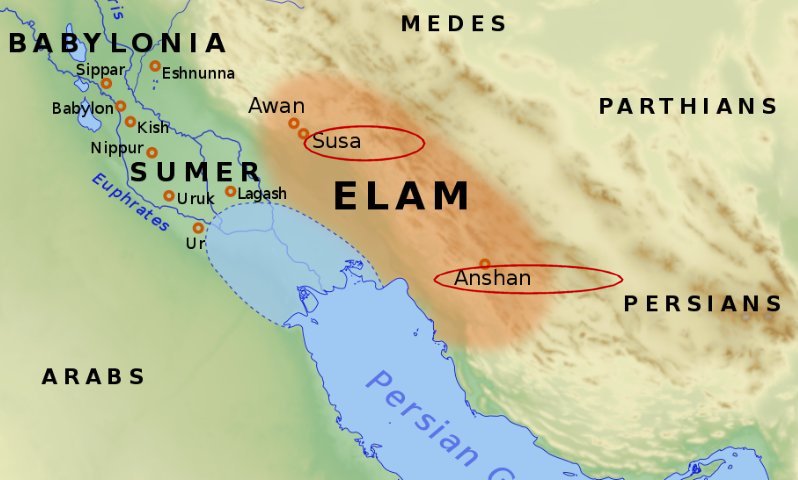Zagros Mountains: Home To Tribes, Kingdoms And Empires For Thousands Of Years
A. Sutherland - AncientPages.com - In and around the Zagros Mountains area to the east of the great Sumerian civilization of Mesopotamia, early humans lived since the Lower Paleolithic Period.
The earliest human fossils discovered in Zagros belong to Neanderthals and come from Bisitun Cave, Wezmeh Cave, and Shanidar Cave, where researchers found the remains of ten Neanderthals, dating from around 65,000-35,000 years ago.
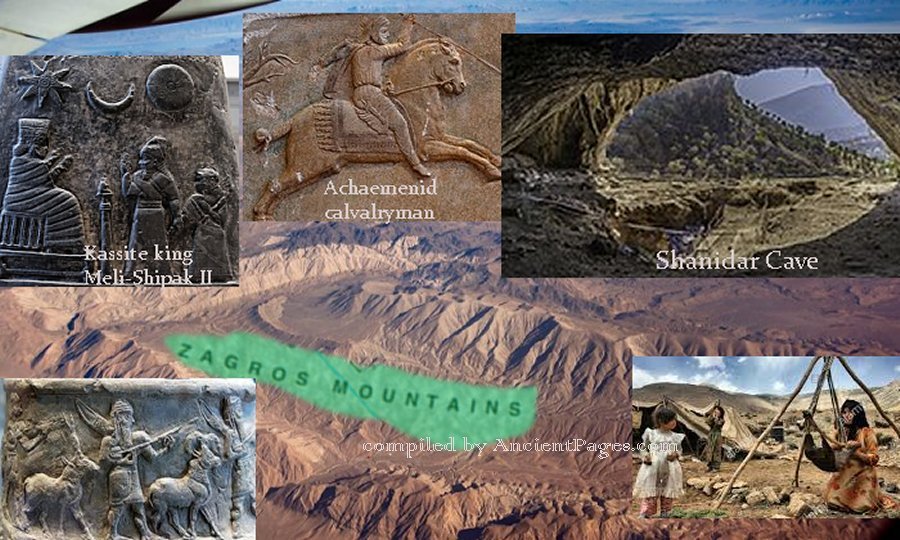
Signs of early agriculture date back as far as 9000 BC in the foothills of the Zagros Mountains. 7,000-year-old jars of wine and other agriculture-related artifacts dated to 8,000 BC confirm the beginning of agriculture in the region.
The 1300-kilometer Zagros mountain range extends from the northwest of Iran (the border of Iran and Turkey) and continues to the southwestern edge of Iran and Pakistan. Zagros has an ancient history of several thousand years, and empires such as the Achaemenids formed 2500 years ago in it.
Some settlements later grew into cities, like Anshan, which is believed to be the origin of one of the world's oldest known civilizations. Anshan was occupied consistently from before 4,000 BC to 1,000 BC. Anshan was politically involved with the Elamites at Susa, an ancient city in the lower Zagros Mountains, where the first settlers appeared over 6000 years ago, as well as the Mesopotamians.
During early ancient times, the Zagros was the home of peoples such as the ancestors of the Sumerians and, later, the Kassites, Guti, and Elamites, whose last written records in Elamite appeared around the conquest of the Achaemenid Empire by Alexander the Great, and the Kingdom of Mitanni that flourished from about 1500 to about 1360 BC and occasionally invaded the Sumerian and Akkadian cities of Mesopotamia.
Zagros Mountains - Image credit: Vah.hem - CC BY-SA 3.0
A few years ago, researchers from Europe, the United States, and Iran discovered intriguing ancient human remains belonging to people who lived in the Zagros Mountains. They compared Neolithic farmers' DNA and that of living people from southern Asia, including from Afghanistan, Pakistan, Iran, and Iranian Zoroastrians in particular.
The results gave evidence of a previously unknown group of Stone Age farmers who may have introduced agriculture to South Asia. These people appear to have taken up farming in the Zagros region around the same time as their cousins further west in Anatolia, now Turkey.
This extraordinary finding contradicts previous theories that a single group of hunter-gatherers developed agriculture in the Middle East some 10,000 years ago and then migrated to Europe, Asia, and Africa, where they gradually replaced or mixed with the local population.
For centuries, as we see, the Zagros was a historical barrier dividing formerly Mesopotamia and Persia, and now Iraq and Iran. Like before, the people living in or in the vicinity of the Zagros Mountains still live nomadic and semi-nomadic lifestyles.
The archaeological discoveries made in the region offer evidence that several ancient civilizations and tribes have continuously occupied the area surrounding the Zagros Mountains.
From archaeological evidence, we know that many inscriptions of Gudea, a ruler (ensi) of the state of Lagash in Southern Mesopotamia who ruled c. 2144–2124 BC, obtained copper from the Zagros Mountains, the first hammered-metal artifacts were found in the highlands of the Zagros and Taurus mountains.
Sumerian cities of that period - ranging from northern Mesopotamia to the southern Zagros foothills produced clay bricks, mosaic decorations, plastered walls, and cemeteries with brick-lined graves. Artisans painted and decorated ceramic goods with geometric designs, copper mirrors, beads of imported and highly valued turquoise, paint for eyelids, cloth, houses, and, above all, monumental temple buildings.
An important trade route that originated in the fertile lowlands of Mesopotamia led through the Zagros highlands, the Iranian plateau, and Afghanistan into Central Asia and regions of Samarkand, Merv, and Ferghana. This great highway helped spread and connect cultures and their traditions and had an enormous impact on trade between East and West.
Updated on November 28, 2023
Written by – A. Sutherland - AncientPages.com Senior Staff Writer
Copyright © AncientPages.com All rights reserved. This material may not be published, broadcast, rewritten or redistributed in whole or part without the express written permission of AncientPages.com
Expand for referencesMore From Ancient Pages
-
 Ancient Tombs Arranged In The Image Of A Galaxy Discovered In Sudan
Archaeology | Jul 8, 2021
Ancient Tombs Arranged In The Image Of A Galaxy Discovered In Sudan
Archaeology | Jul 8, 2021 -
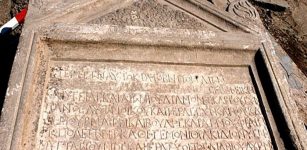 Third-Century Inscription Related To Dionysus Cult – Discovered
Archaeology | Jul 16, 2019
Third-Century Inscription Related To Dionysus Cult – Discovered
Archaeology | Jul 16, 2019 -
 Mesopotamians Worshipped An Unusual And Peculiar-Looking Creature – Archaeology And Sacred Texts Reveal – But What Was It?
Featured Stories | Dec 19, 2024
Mesopotamians Worshipped An Unusual And Peculiar-Looking Creature – Archaeology And Sacred Texts Reveal – But What Was It?
Featured Stories | Dec 19, 2024 -
 The Face Of The Amarakarei – Remarkable Enormous Face Caved Into Stone Cliffs In Peru
Places | Nov 20, 2015
The Face Of The Amarakarei – Remarkable Enormous Face Caved Into Stone Cliffs In Peru
Places | Nov 20, 2015 -
 Sunken Land Of Lyonesse: Legendary Kingdom That Influenced Stories Of Writers And Fishermen
Featured Stories | Mar 16, 2017
Sunken Land Of Lyonesse: Legendary Kingdom That Influenced Stories Of Writers And Fishermen
Featured Stories | Mar 16, 2017 -
 DNA Study Of Ice Age Survivors Reveals A Surprise About The Gravettian Culture
Archaeology | Mar 1, 2023
DNA Study Of Ice Age Survivors Reveals A Surprise About The Gravettian Culture
Archaeology | Mar 1, 2023 -
 What Happened To The Pythagorean Brotherhood?
Ancient History Facts | Apr 5, 2021
What Happened To The Pythagorean Brotherhood?
Ancient History Facts | Apr 5, 2021 -
 Sacrificial Remains From The Iron Age Unearthed Near Aarhus, Denmark
Archaeology | Oct 14, 2015
Sacrificial Remains From The Iron Age Unearthed Near Aarhus, Denmark
Archaeology | Oct 14, 2015 -
 5 Lessons From Ancient Civilizations For Keeping Homes Cool In Hot, Dry Climates
Featured Stories | Sep 16, 2024
5 Lessons From Ancient Civilizations For Keeping Homes Cool In Hot, Dry Climates
Featured Stories | Sep 16, 2024 -
 Pharaoh Hor Aha – 1st Dynasty Ruler Of Ancient Egypt Who Founded The City Of Memphis And May Have Been The Legendary Menes
Featured Stories | Jun 23, 2018
Pharaoh Hor Aha – 1st Dynasty Ruler Of Ancient Egypt Who Founded The City Of Memphis And May Have Been The Legendary Menes
Featured Stories | Jun 23, 2018 -
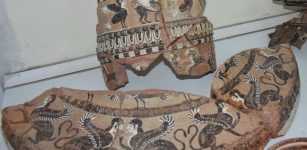 One Of A Kind 2,500-Year-Old Ritual Wash Basin Painted With Mythological Figures Discovered In The Ancient City Of Klazomenai
Archaeology | Oct 1, 2022
One Of A Kind 2,500-Year-Old Ritual Wash Basin Painted With Mythological Figures Discovered In The Ancient City Of Klazomenai
Archaeology | Oct 1, 2022 -
 Societies In Iberian Peninsula Deployed “Escape Economics” 4,000-Year-Old
Archaeology | Sep 28, 2022
Societies In Iberian Peninsula Deployed “Escape Economics” 4,000-Year-Old
Archaeology | Sep 28, 2022 -
 Human Footprints Of People Who Used Caves Of Ojo Guareña, Burgos 4600 Years Ago
Archaeology | Mar 11, 2021
Human Footprints Of People Who Used Caves Of Ojo Guareña, Burgos 4600 Years Ago
Archaeology | Mar 11, 2021 -
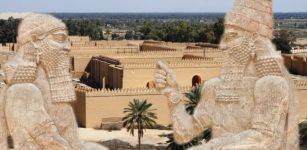 Mysterious Death Of Cambyses II – Natural, Suicide Or Assassination By Darius I The Great?
Featured Stories | Apr 21, 2021
Mysterious Death Of Cambyses II – Natural, Suicide Or Assassination By Darius I The Great?
Featured Stories | Apr 21, 2021 -
 Ullr – Famous Norse Archer – God Of Asgard And Fastest Skier Ever Known Who Taught People The Art
Featured Stories | Jan 10, 2020
Ullr – Famous Norse Archer – God Of Asgard And Fastest Skier Ever Known Who Taught People The Art
Featured Stories | Jan 10, 2020 -
 Blood Of St. Januarius – One Of The Most Remarkable Christian Relics
Artifacts | Jun 27, 2017
Blood Of St. Januarius – One Of The Most Remarkable Christian Relics
Artifacts | Jun 27, 2017 -
 Political Debates In Ancient Rome: Great Harshness, Personal Attacks And Unpleasant Atmosphere
Archaeology | Aug 29, 2018
Political Debates In Ancient Rome: Great Harshness, Personal Attacks And Unpleasant Atmosphere
Archaeology | Aug 29, 2018 -
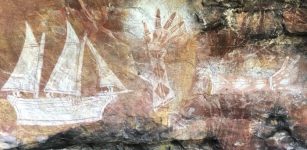 Map Of Hidden NT Landscape Where First Australians Lived More Than 60,000 Years Ago
Archaeology | May 5, 2023
Map Of Hidden NT Landscape Where First Australians Lived More Than 60,000 Years Ago
Archaeology | May 5, 2023 -
 Empusa – Shape-Shifting Evil Female Demon In Greek Myth And Folklore
Featured Stories | Jun 3, 2020
Empusa – Shape-Shifting Evil Female Demon In Greek Myth And Folklore
Featured Stories | Jun 3, 2020 -
 Cats Were Rare And Expensive During The Viking Age – Spectacular Discovery Reveals Why
Featured Stories | Jan 12, 2017
Cats Were Rare And Expensive During The Viking Age – Spectacular Discovery Reveals Why
Featured Stories | Jan 12, 2017


